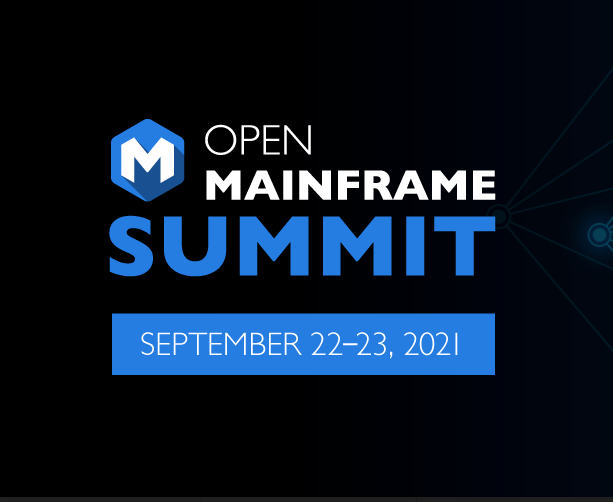The post Linux in Aerospace: A Personal Journey appeared first on Linux.com.
]]>
By Steven H. VanderLeest, Software Engineering Technical Lead at The Boeing Company
Introduction
From the early days of Linux, I was a fan of this innovative, open-source Operating System (OS). I appreciated it as a hobbyist, helping me run Linux at home. I appreciated it as an educator, helping my computer engineering students walk with Linux through OS concepts. However, as a professional working in the safety-critical domain of aerospace, I wondered: could Linux fly?
My Pre-flight Taxi with Linux
My journey with Linux had its roots in the 1980s before Linus Torvalds introduced his new OS to the world in 1991. During my undergraduate degree in the 1980s, my engineering program had some labs equipped with the relatively recent IBM Personal Computer (PC). The machines were amazing, but my ability to command their power was somewhat limited by the OS, which was the Microsoft Disk Operating System (MS-DOS). When I reached my third year, I gained access to a Sun Workstation running SunOS, a variant of Unix. I quickly learned to appreciate the rich menagerie of shell commands, the power of combining them with redirection such as pipes, and the aesthetics of the fledgling X-Windows GUI.
I first heard about Linux in graduate school in the early 1990s at the University of Illinois at Urbana-Champaign. My doctoral thesis was on Input/Output (I/O) performance, especially on multiprocessor systems. My research analyzed and quantified I/O performance on OSs such as SunOS, SGI IRIX, DEC OSF/1, HP-UX, and Linux. One key finding of my research was that I/O performance could be impacted by the interference caused by unrelated transactions contending for shared resources within a multi-processor system. The magnitude of the impact was heavily dependent not only on the computing hardware architecture but also on the architecture of the OS. Interference could even occur on a uni-processor where independent processes had I/O tasks clustered in time.
As an educator, I applied Linux in my teaching. After finishing my Ph.D., I returned to my alma mater, Calvin College (now University), to take a position as a professor of engineering, teaching computer engineering topics. Linux provided a rich learning environment where my students could look under the hood while learning about operating systems. The transparency of open-source code made an ideal environment for learning and innovation. I also wanted to share my love for working at the interface between computer hardware and software. Studying the Linux kernel provided key insights into how the OS manages the hardware on behalf of applications. The overall system’s performance will improve if the OS is reasonably tuned to take advantage of the hardware architecture.
As a hobbyist, I used Linux at home. I set it up on any extra desktop or laptop I could get my hands on. The whole family got involved when I set up MythTV, an open-source streaming media system, and installed it on a spare Linux desktop system along with an expansion card to capture and record live television. We were asynchronously watching programs and never missing an episode well before any of our friends or neighbors followed suit with ReplayTV or TiVo.
As an engineering professional, I found opportunities to bolster my work with Linux. The challenge was that my employers often required MS Windows as the standard a bureaucratic IT department imposed. Nevertheless, I discovered ways to use Linux by dual-booting or a LiveCD approach and eventually run Linux in a virtual machine using hypervisors like VirtualBox. Like its Unix forebears, Linux was much more stable and reliable than Windows. Even if an application program went astray, I got a segmentation fault warning at most, and the other processes continued. Windows was prone to the Blue Screen of Death, bringing the system to a halt much too often. While it might be distressing to lose your work when this happened, losing a few minutes of labor (or hours if you didn’t save often) was a minor albeit annoying inconvenience. I couldn’t expect higher reliability since that wasn’t a use case for office desktop systems. I quickly realized that Windows doesn’t apply to safety-critical systems.
I also would not expect an operating system designed for an office desktop/laptop to work for embedded systems where the available main memory and secondary storage are limited. Embedded computing platforms are all around us but hidden inside our vehicles, more sophisticated consumer electronics, and smart devices. Windows might not work in these use cases, but Linux could! I started using Linux on embedded development boards when chip manufacturers such as Freescale (later NXP), Intel, Texas Instruments, and others began providing a Linux Board Support Package. The chip makers found this approach was the most effective way to get developers up and running quickly on their new hardware.
Taking Flight with Linux
Within safety-critical domains such as aerospace, Linux provides the foundation for multiple software development environments that run on desktops and laptops. As we move toward distributed development, Linux is a ubiquitous cloud guest OS.
For embedded, safety-critical applications, Linux is less common than a Real-Time Operating System (RTOS). However, a group of Linux developers has been slowly improving real-time performance since the 1990s. Attention coalesced into the PREEMPT-RT patch since 2004, with key parts of the patch making their way to the mainline kernel code. Today, almost all PREEMPT-RT functionality is mainlined but must be enabled through kernel configuration parameters. As for the safety-critical need, in the early 2010s, several research groups examined Linux as a foundation for an Integrated Modular Avionics (IMA) system. I led one of these efforts as the Principal Investigator for a Small Business Innovation Research (SBIR) contract with the US Defense Advanced Research Projects Agency (DARPA). We developed a proof-of-concept safety-critical system that combined the Xen hypervisor with Linux as a guest OS, to provide ARINC 653 partitioning, a key standard related to IMA.
Over the past decade, multiple private endeavors have applied Linux in aeronautical and astronautical computing systems, even platforms with modest safety criticality, though only a few of these efforts have been publicized. Demonstrating that software is reliable enough for flight is ambitious. I work for Boeing, one of the aerospace companies tackling that challenge. The next section provides an overview of the four key characteristics necessary to put aircraft using Linux into the air.
Developing Software for Aerospace is Challenging
For use in avionics (an electronic computing platform used on an aircraft), the software must be fast, deterministic, embedded, and assured.
Fast
For use in avionics, Linux must be fast. The Linux developer community is already heavily focused on speed, constantly innovating kernel performance improvements.
The aerospace industry can largely leverage the Linux community effort toward high performance. There may be a few specialized devices where drivers must be further optimized. However, those devices will almost always follow the existing design patterns and take advantage of community innovations, such as io_uring. Another example of an area that might need more attention is boot time. For aerospace, certain fault-tolerance techniques require a fast boot-up (or in-air re-boot) time. In these cases, the system must be operational in only a few seconds or even less.
Deterministic
For use in avionics, Linux must be deterministic. Remember the action thriller series 24? Jack Bauer (played by Kiefer Sutherland) would introduce the series with a voice-over claiming “events occur in real-time”. The audience understood that we were watching as if it were airing live. This commonly understood definition of real-time is not quite the same idea as a real-time computing system. For an RTOS, real-time means that the response to critical events will occur within a deterministic amount of time, even in the worst case. Most computing systems- hardware and software- are tuned to optimize the average response time. Most users and actions enjoy a rapid response, but sometimes at the expense of a slow response for certain users or certain actions. A deterministic system is not necessarily fast — it simply means that we can bound, with confidence, the maximum for critical response times. We want a guaranteed maximum response time in a real-time system, even in the worst case. If we were grading responses like students, we don’t care if the best score was an A+ or the average score was a C. We care that the worst score is still a passing grade in real-time systems. Let’s say the system must always respond within 50 milliseconds, or something bad happens. Over a series of tests, perhaps you find that the fastest response is 12 milliseconds, the average is 27 milliseconds, and the worst is 42 milliseconds. For determinism, we only care that the worst response is still under the requirement (in this example, it appears to be meeting our needs).
The aerospace industry can leverage the Linux community’s effort toward determinism. The PREEMPT_RT patches developed over the last 20 years have largely been mainlined, but must still be configured to enable them. Deterministic boot time has received less attention than deterministic response time, but both are important for aerospace applications.
Embedded
For use in avionics, Linux must be embedded. Embedded use cases are constrained with limited size, weight, and power. The most widely deployed embedded instance of Linux is probably the Android OS, used on the largest number of smartphones around the globe today. The vast majority of the billions of embedded devices that make our digital world run smoothly are not this visible — they are under the hood in your car, behind the panel of your home thermostat, and in many other behind-the-scenes locations.
Many industries, including the aerospace industry, continue to turn to Linux for embedded systems. Chip manufacturers continue to support Linux, often the first OS for which they provide starter software development kits. Developers from across the open-source community continue to develop drivers for new devices.
Assured
Regulatory agencies often oversee safety-critical systems to ensure the software is correct to a high confidence level. Because public safety is at stake, the agencies generally have the authority to enforce standards before a product can be released. For use in avionics, Linux must be assured. For avionics software in civilian aircraft, the authority to approve flight certification is specific to a geographic region. For example, in the United States, it is the Federal Aviation Administration (FAA); in most of Europe, it is the European Union Aviation Safety Agency (EASA).
The details of safety standards vary across industries such as nuclear, automotive, medical, aeronautical, rail, and others. However, the same basic concepts are found in all of them, such as expert peer review or formal means of verification and validation to show the software is suited to purpose. Most have two aspects: ensuring the software is reliable (it does the things we want) and safe (it does not do things we do not want).
A key standard for avionics software is DO-178C, which describes software development life cycle processes and objectives that must be met. DO-178C defines five software levels. The lowest is level E, where a software bug has no impact on the safety of the crew or passengers. An example might be the passenger entertainment system. The highest is level A, where a software bug could have catastrophic results. An example might be the flight control software that responds to pilot commands.
The aerospace industry can leverage much less from the Linux community regarding assurance than the other criteria stated earlier. On the one hand, Linux has been extensively field-tested, so it has a strong product history. Due to the crowd-sourcing nature of open source, Linux likely has more expert peer reviews than any other existing software. Assurance of Linux also benefits from the reasonably large number of tests available within several test frameworks. On the other hand, Linux was not designed expressly for aerospace, nor even for safety-critical use cases in general. The design has been much more iterative and ad-hoc, making it more challenging to demonstrate the correct design to software safety regulatory authorities.
Conclusion
Linux is already being used in flight-certified systems at level D. Aerospace companies like Boeing are now poised to use Linux more broadly and at higher levels of assurance, with groups like ELISA leading the effort. ELISA is the Enabling Linux In Safety Applications project under the Linux Foundation. Its mission is to make it easier for companies to build and certify Linux-based safety-critical applications. ELISA recently formed a new working group focused on Aerospace, which will tackle some of the challenges outlined above. We are just getting this group started and welcome new members!
I have crawled, walked, and run with Linux. Now it is time to fly!
For more information
The post Linux in Aerospace: A Personal Journey appeared first on Linux.com.
]]>The post Download the 2021 Linux Foundation Annual Report appeared first on Linux.com.
]]>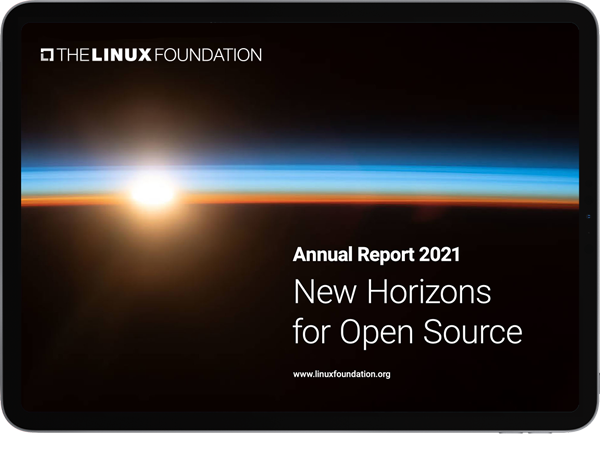
In 2021, The Linux Foundation continued to see organizations embrace open collaboration and open source principles, accelerating new innovations, approaches, and best practices. As a community, we made significant progress in the areas of cloud-native computing, 5G networking, software supply chain security, 3D gaming, and a host of new industry and social initiatives.
Download and read the report today.
The post Download the 2021 Linux Foundation Annual Report appeared first on Linux.com.
]]>The post VIDEO: Yuval Bachar of Open19 Project appeared first on Linux.com.
]]>Open19 project is looking at standardizing compute, storage and network so consumers and manufacturers can share technologies so users can use a mix of products without taking away the ability for manufacturers to differentiate their offerings. The Linux Foundation is hosting the Open19 project, and one of the founders of the project, Yuval Bachar, has also become the Linux Foundation fellow. We sat down with Bachar to learn more about the project.
The post VIDEO: Yuval Bachar of Open19 Project appeared first on Linux.com.
]]>The post State of the Open Mainframe 2021 appeared first on Linux.com.
]]>The mainframe is a foundational technology that has powered industries for decades, including government, financial, healthcare, and transportation. With the help of surrounding communities, the technologies built around this platform have paved the way for the emergence of a new set of technologies we see deployed today. Notably, a significant number of mainframe technologies are profoundly embracing open source.
The genesis of the open mainframe community
The mainframe has a tradition of having an open user community going back to SHARE in the 1950s. A group of mainframe technologists came together in Los Angeles, California, to share tips, insights, and, yes, code for the newly released IBM 701 computer system. SHARE was very likely the first open source software community.
See Below: Open Mainframe Summit Playlist (35 videos)
Over the years, this user group met regularly to share and collaborate on using the IBM 701 and subsequent systems. The “code” that came together was freely shared between mainframe operators and developers. As the years passed, it was quickly realized that there was a need to curate this code into a repository that others in the industry could use.
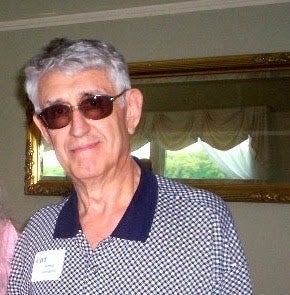
Arnie Casinghino, Circa 2011
Arnold “Arnie” Casinghino was one of the first to recognize the need to collaborate. In 1975, he began to curate scripts and tools into the CBT Tape project (CBT standing for the name of Arnie’s then-employer, the now-defunct Connecticut Bank and Trust Company). Interested users at that time would send Arnie a letter with a few dollars to request a tape, a method of distribution that carries on to today even though most users download the latest release from their website.
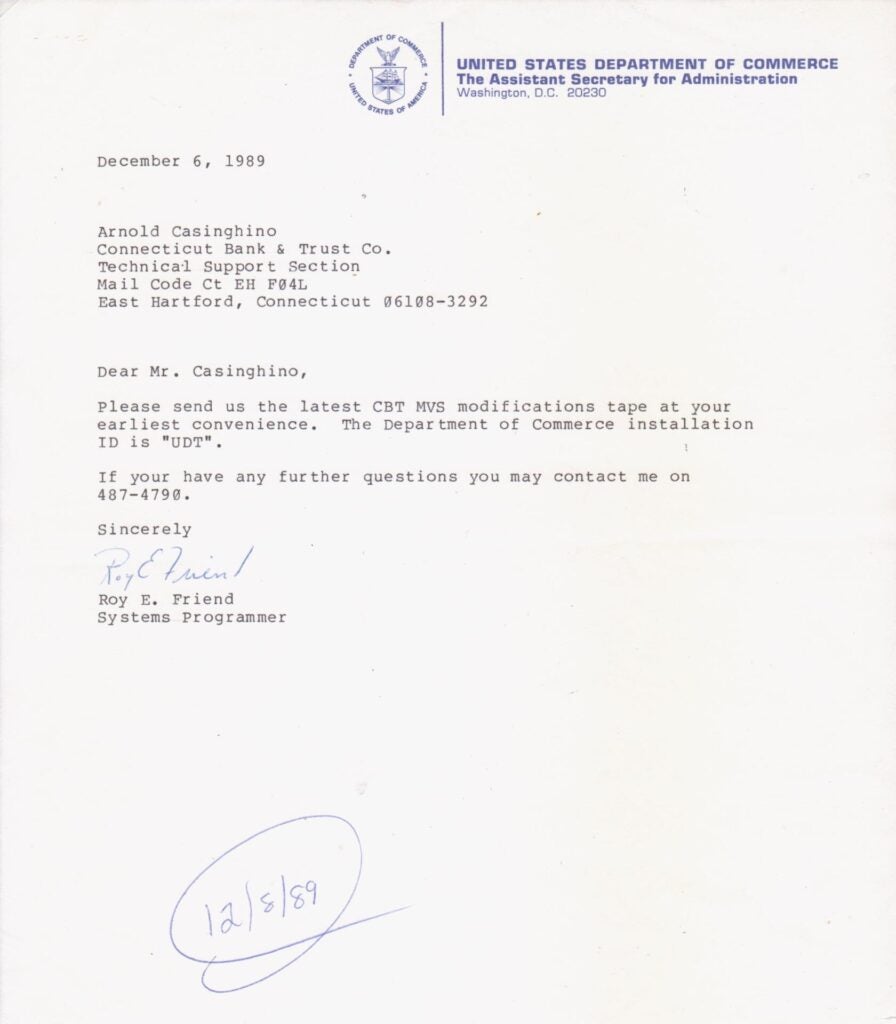
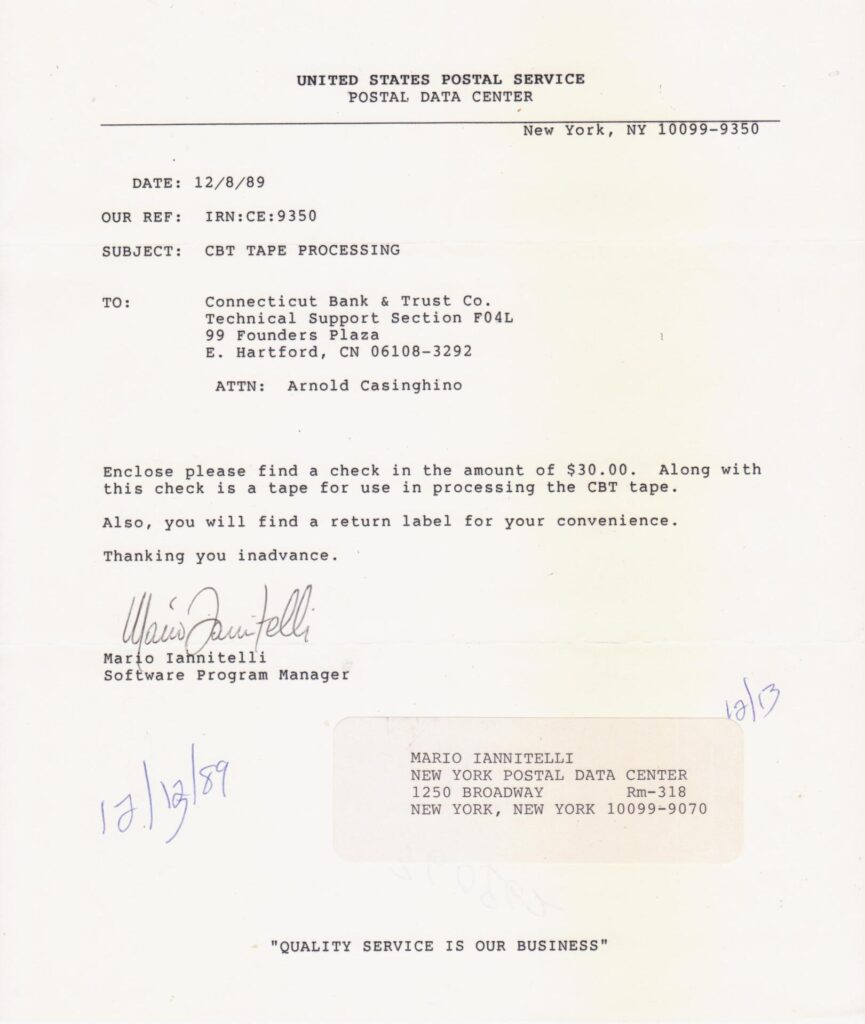
Casinghino’s vision culminated into a project that continues today and is now hosted at the Open Mainframe Project under the leadership of Sam Golab.
Linux comes to the mainframe
As Linux began to take the world by storm in the 1990s, a small group of mainframe enthusiasts started experimenting with Linux on IBM System 390 (a previously current generation of mainframe hardware). Over the last 20 years, others like Hitachi and Fujitsu also invested in enabling open source and Linux on their mainframe platforms. Linux on mainframe marked its official start on December 18, 1999, with IBM publishing a collection of patches and additions to the Linux 2.2.13 kernel.
The year 2000 brought momentum to Linux on the mainframe. The first true “Linux distribution” for these systems came in early 2000 as a collaboration between Marist College in Poughkeepsie, N.Y., and Think Blue Linux by Millenux in Germany. By October of that year, SUSE became the first vendor-supported Linux Distribution, in the first release of what’s now known as SUSE Enterprise Linux. SUSE’s first s390x distro represented an early example of mainframe leading the way in the evolution of computing technology.
Today, nine known Linux distributions currently provide an s390x architecture variant.
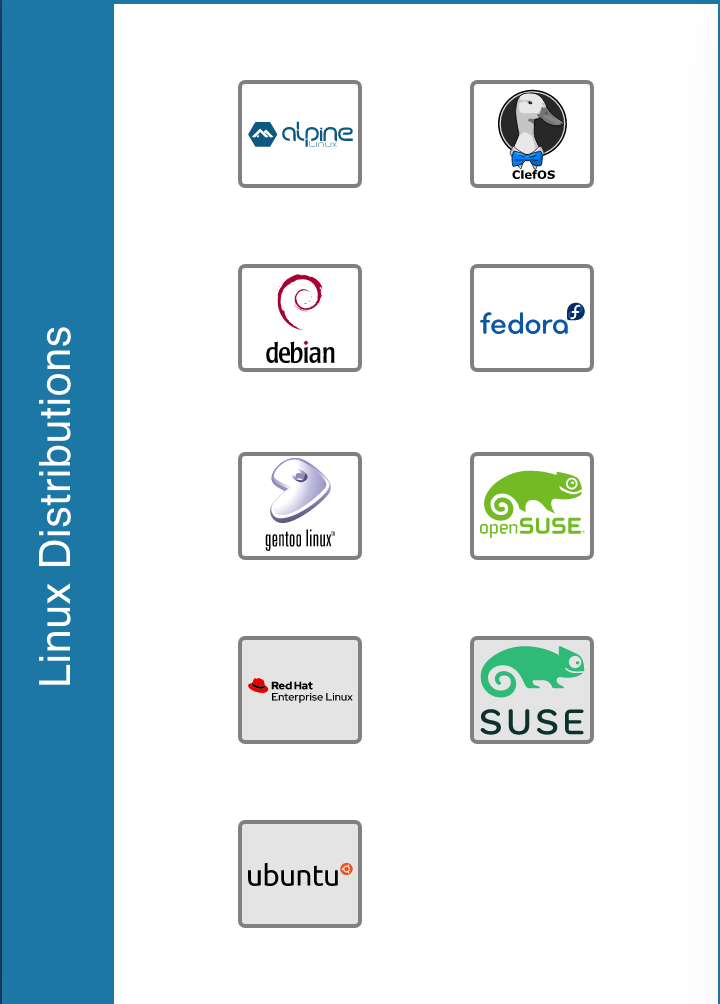
Source: https://landscape.openmainframeproject.org/open-source?zoom=200
The expansion of the mainframe as a platform for Linux continues to be nurtured in the Open Mainframe Project, with key projects outlined below helping Linux on the mainframe continue to be a platform used by Fortune 100 companies worldwide.
- Feilong, which provides an interface between z/VM (the primary hypervisor for mainframe, is directly based on technology and concepts dating back to the 1960s) and modern cloud stack systems such as OpenStack, is jointly developed by IBM, SUSE, and others.
- Tessia is a tool that automates and simplifies the installation, configuration, and testing of Linux systems running on the Z platform.
Developments in COBOL
COBOL, which stands for “Common Business-Oriented Language,” is a compiled, English-like computer programming language developed for use as a business applications language. Its roots go back to the 1950s, and COBOL is still frequently used in many industries for key applications.
The COVID-19 pandemic in April 2020 put high levels of stress on various government services due to the unprecedented number of unemployment applications and other similar needs. This put the spotlight on COBOL, as it was then the predominant technology used for these systems. This also highlighted the perceived lack of talent to support these systems, which have code going back to the 1960s.
The vast COBOL and mainframe communities quickly addressed this need and made several efforts to provide a sustainable home for COBOL.
- Calling all COBOL Programmers Forum – an Open Mainframe Project forum where developers and programmers who would like to volunteer can post their profiles or are available for hire. Whether they are actively looking for employment, retired skilled veterans looking to stay involved, students who have completed COBOL courses, or are professionals wanting to volunteer, the forum offers the opportunity for job seekers to specify their level of expertise and availability to assist. Employers can then connect with these individuals as needed.
- COBOL Technical Forum – a new forum created specifically to address COBOL technical questions in which experienced COBOL programmers monitor activity. The forum allows all programmers to quickly learn new techniques and draw from a broad range of community expertise to address common questions and challenges exacerbated during this unprecedented time.
- Open Source COBOL Training – the Open Mainframe Project Technical Advisory Council has approved hosting a new open source project that will lead collaborative efforts to create training materials on COBOL. The courseware was contributed by IBM based on its work with clients and institutions for higher education and is provided under an open source license.
These initiatives were followed by a formal COBOL Working Group established later in 2020 to address the long-term challenges in building a sustainable COBOL ecosystem.
In early 2021, attention turned to the tooling ecosystem for COBOL developers with the launch of the COBOL Check project. This initiative enables test-driven development (TDD) practices for COBOL by providing a unit testing framework.
Zowe brings together the industry leaders to drive the future development paradigms of the mainframe
Traditionally, organizations have been challenged by integrating mainframe applications and data with the other systems that power their enterprise. This integration task further created a talent development challenge, as the paradigms between mainframe and other enterprise computing systems differed enough to make skills not easily transferable.
Broadcom, IBM, and Rocket Software saw this challenge and independently developed various frameworks to close this gap with the mainframe development experience. These include:
- An API Mediation Layer for standardizing the API experience for mainframe applications and services
- A CLI tool that could be run on a developer’s laptop or other non-mainframe systems and used for DevOps tooling integration.
- A Web Desktop interface to make it easier to develop web-based applications that leverage mainframe services and data using common development toolkits.
These components came together in August 2018 in Zowe, which was the first open source project launched that targeted the z/OS operating system (the predominant operating system on mainframe systems). The intention of bringing this project into the vendor-neutral Open Mainframe Project was to establish Zowe as the dominant development and integration tool for mainframe systems, aligning the mainframe community around Zowe.
After Zowe 1.0 was released in February 2019, the project quickly turned to enable a downstream ecosystem of vendor offerings to flourish by establishing the Zowe Conformance Program in August 2019. To date, there are more than 50 Zowe Conformant offerings from 6 different vendors in the mainframe industry.
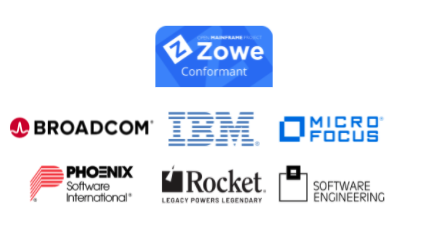
In addition, Zowe has brought new projects into its scope, with the following incubator projects as of August 2021:
- ZEBRA, which provides re-usable and industry compliant JSON formatted RMF/SMF data records so that many other ISV SW and users can exploit them using open-source SW in many ways (contributed by Vicom Infinity).
- Workflow WiZard helps developers and systems programmers simplify the generation and management of z/OSMF workflows (contributed by BMC).
Zowe boasts more than 300 contributors with more than 34,000 contributions as of August 2021.
Mentorship to support the mainframes of tomorrow
One of the initial initiatives of the Open Mainframe Project was to establish a path to onboard students into the mainframe community, aligning with the current interest in open source development. Additionally, with the growth of open source on the platform, there was a need for maintainers for these projects with mainframe skills.
The Open Mainframe Project launched its first mentorship program in 2016, with seven students making contributions to the open source ecosystem on the mainframe. To date, more than 50 mentees have participated in this program, making important contributions to projects such as:
- Alpine Linux, resulting in the port for the s390x architecture.
- HyperLedger
- Kubernetes
- CloudFoundry
- OpenStack
- And many of the hosted projects at the Open Mainframe Project and beyond
This summer, the Open Mainframe Project welcomed a record 14 mentees across the globe that had mentors in several projects including a few new ones such as ATOM, COBOL Programming Course, COBOL Working Group, Mainframe Open Education, Polycephaly, Software Discovery Tool, and Zowe.
The mentorship program has enabled these students to become part of the future mainframe talent, with mentorship graduates now in developer roles at ADP, IBM, SUSE, and others.
The future is bright for the mainframe
The mainframe has seen a resurgence in the past five years, with the launch of the Open Mainframe Project and the industry coming together in key open source projects in the COBOL, Linux on System Z, and z/OS ecosystems. The Open Mainframe Project hosts more than 20 projects and working groups supported by over 45 organizations as of August 2021, with no signs of slowing anytime soon.
Read more about the Open Mainframe Project in the 2020 annual report, and join us at Open Mainframe Summit on September 22-23, 2021.
The post State of the Open Mainframe 2021 appeared first on Linux.com.
]]>The post OpenPOWER Foundation announces LibreBMC, a POWER-based, fully open-source BMC appeared first on Linux.com.
]]>Baseboard management controllers (BMCs) are a mainstay in data centers. They enable remote monitoring and access to servers, and they’re responsible for the rise of “lights out management.” But from a hardware perspective, there has been little innovation in this space for years. BMC processors are built on legacy architectures that are proprietary and closed.
The OpenPOWER Foundation is announcing a new workgroup to develop LibreBMC, the first ever baseboard management controller with completely open-source software and hardware. The processor will be based on the POWER ISA, which was open-sourced by IBM at OpenPOWER Summit North America in August, 2019.
The post OpenPOWER Foundation announces LibreBMC, a POWER-based, fully open-source BMC appeared first on Linux.com.
]]>The post Video: New Online Courses for RISC-V appeared first on Linux.com.
]]>The post Video: New Online Courses for RISC-V appeared first on Linux.com.
]]>The post OpenPOWER Foundation Provides Microwatt for Fabrication on Skywater Open PDK Shuttle appeared first on Linux.com.
]]>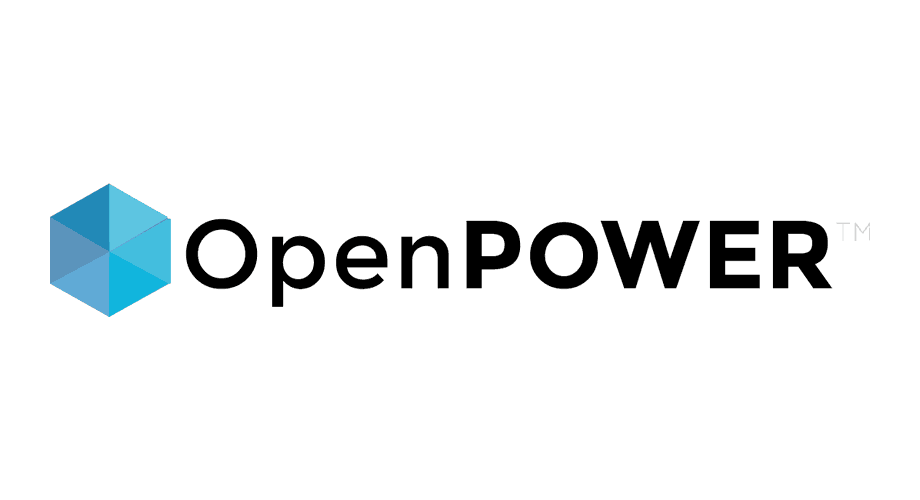
The OpenPOWER based Microwatt cpu core has been selected to be included in the Efabless Open MPW Shuttle Program. Microwatt’s inclusion in the program represents a lower barrier to entry for chip manufacturing. It also demonstrates the ability to create fully designed, fabricated chips relying on a complete, end-to-end open source environment – including open governance, specifications, tooling, IP, hardware, software, and manufacturing.
Read more at OpenPOWER Foundation
The post OpenPOWER Foundation Provides Microwatt for Fabrication on Skywater Open PDK Shuttle appeared first on Linux.com.
]]>The post Linux System Administration Training and Certification Leads to New Career appeared first on Linux.com.
]]>Fabian Pichardo has worked with multiple hardware platforms such as Nvidia, Xilinx, Microchip, and National Instruments, and is skilled in languages such as C++, Python, Matlab, and Julia. During university, Fabian created the Mechatronic Student Society to offer programming training for newbies and demonstrate new technology trends.
In 2018 he applied for and was awarded a Linux Foundation Training (LiFT) Scholarship in the Open Source Newbies category to increase his experience with open source technologies.
The post Linux System Administration Training and Certification Leads to New Career appeared first on Linux.com.
]]>The post Welcome Antmicro to the OpenPOWER Foundation appeared first on Linux.com.
]]>This May, Antmicro announced support for the POWER ISA in Renode, its open source, multi-architecture, heterogeneous multi-core capable simulator for software development and software-hardware co-development.
It’s an exciting development, as developers can now test applications based on the POWER ISA before running them on actual hardware. It’s an important step in achieving the vision of the OpenPOWER Foundation – to make POWER the easiest architecture on which to go from an idea to a silicon chip.
I recently caught up with Michael Gielda, VP of business development, to discuss Antmicro, its role in the OpenPOWER Foundation ecosystem and its beliefs on open source hardware in general.
Read more at OpenPOWER Foundation
The post Welcome Antmicro to the OpenPOWER Foundation appeared first on Linux.com.
]]>The post Student Linux club refurbishes computers to support distance learning (opensource.com) appeared first on Linux.com.
]]>It was March 17, 2020, and I was in my classroom at Aspen Academy. The clock was ticking. This was to be the last day of school before we, along with every other public school in Minnesota, would close due to the outbreak of the new coronavirus. I had students in my room during lunch, advisory periods, and my elective classes all doing the same thing—installing Linux onto old computers so we could give them to students who would use them for school at home during the shelter in place order. I was only going to have the kids’ help until dismissal time, but in the end, we had 17 computers ready to go. It was a start.
The post Student Linux club refurbishes computers to support distance learning (opensource.com) appeared first on Linux.com.
]]>